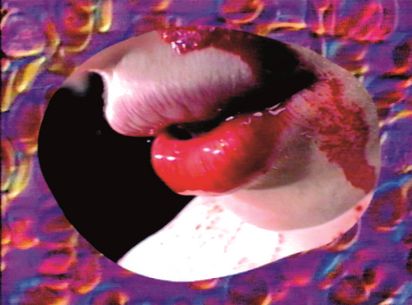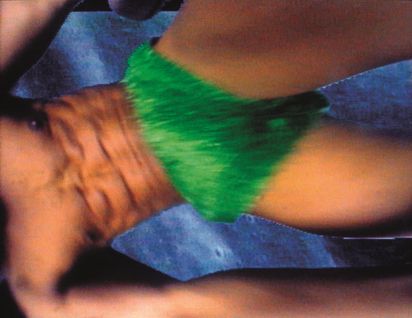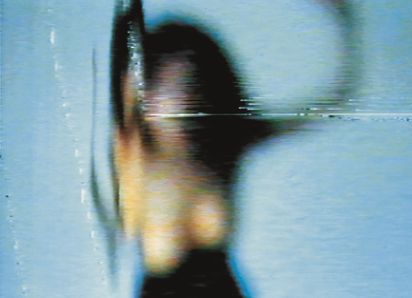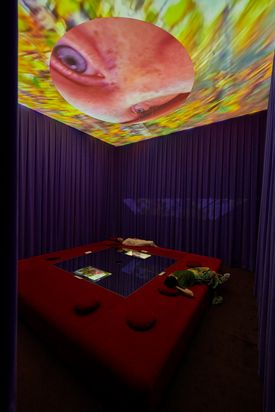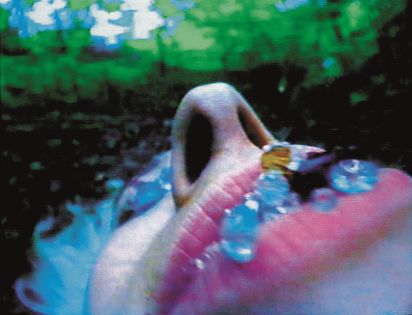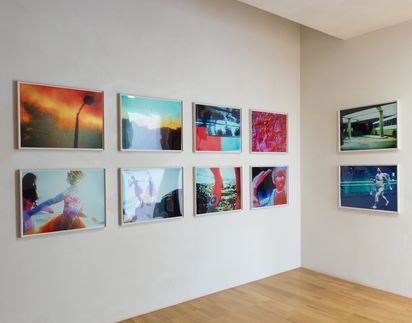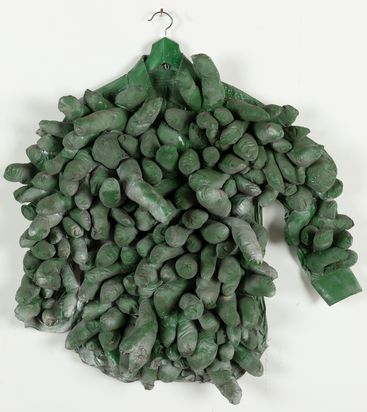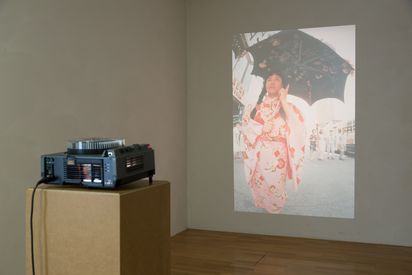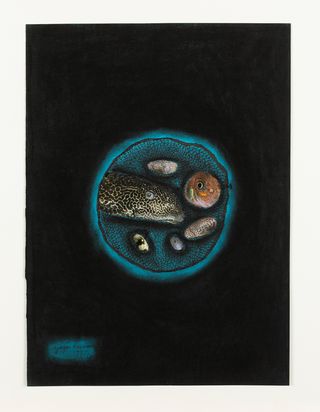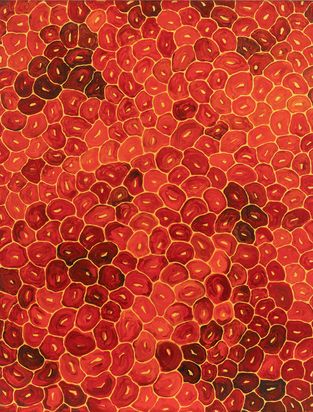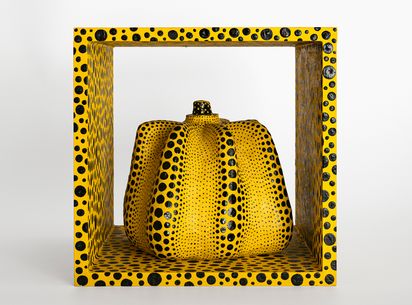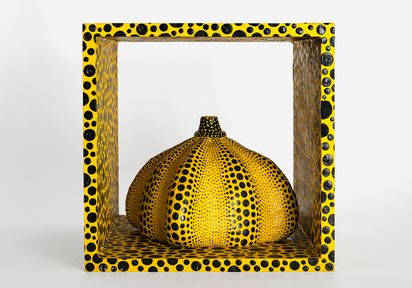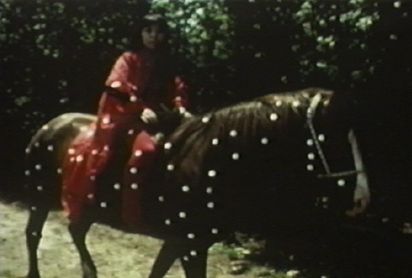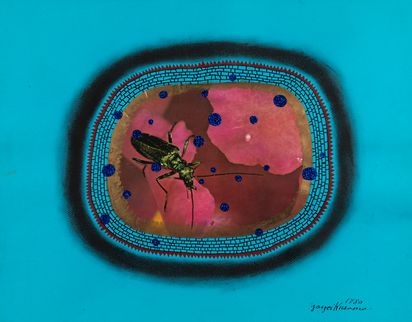Many of Pipilotti Rist’s early single-channel videos reference the aesthetics of music video clips from the 1980s and 1990s. For I’m a Victim of this Song, the artist and Anders Guggisberg collaborate and reinterpret the 1989 song Wicked Game by Chris Isaak, which became a top 10 hit as the soundtrack to David Lynch’s 1990 film Wild at Heart. In 1991, Herb Ritts shot a black-and-white music video for the song, which won an award at the MTV Video Music Awards. The video alternates between images of passing clouds and those of Chris Isaak and Helena Christensen—a top model of the time—romantically embracing and caressing each other on a deserted beach lined with palm trees. The film employs virtually all the clichés of romantic love. Rist’s own video of the song also begins with cloud images that she has digitally processed. But in Rist’s video, the clouds do not lead the viewer to a beach in the South Seas, but rather to the planter in her favorite Viennese coffee house. The camera then pans across the room, passing over the guests, before lingering on a woman reading and briefly focusing on a waiter. In contrast to Herb Ritts’ video, Rist’s camera focuses on the cloud formations, in which images appear and disappear like fragmented memories.
“The raw material for I'm a Victim of this Song came about because I wanted to film the fifteen different lamps found in my favorite café, Prückel, in Vienna. It was only later that I discover one woman was reading a book and others were playing cards. The poetic effect was so much stronger than it would have been had I filmed them directly,” Rist commented in an interview. The unintentional poetry that results from the slightly blurred and somewhat indistinct images is countered at the end by the artist’s voice, which becomes a hysterical screech, reminding us of the painful side of romantic relationships.

